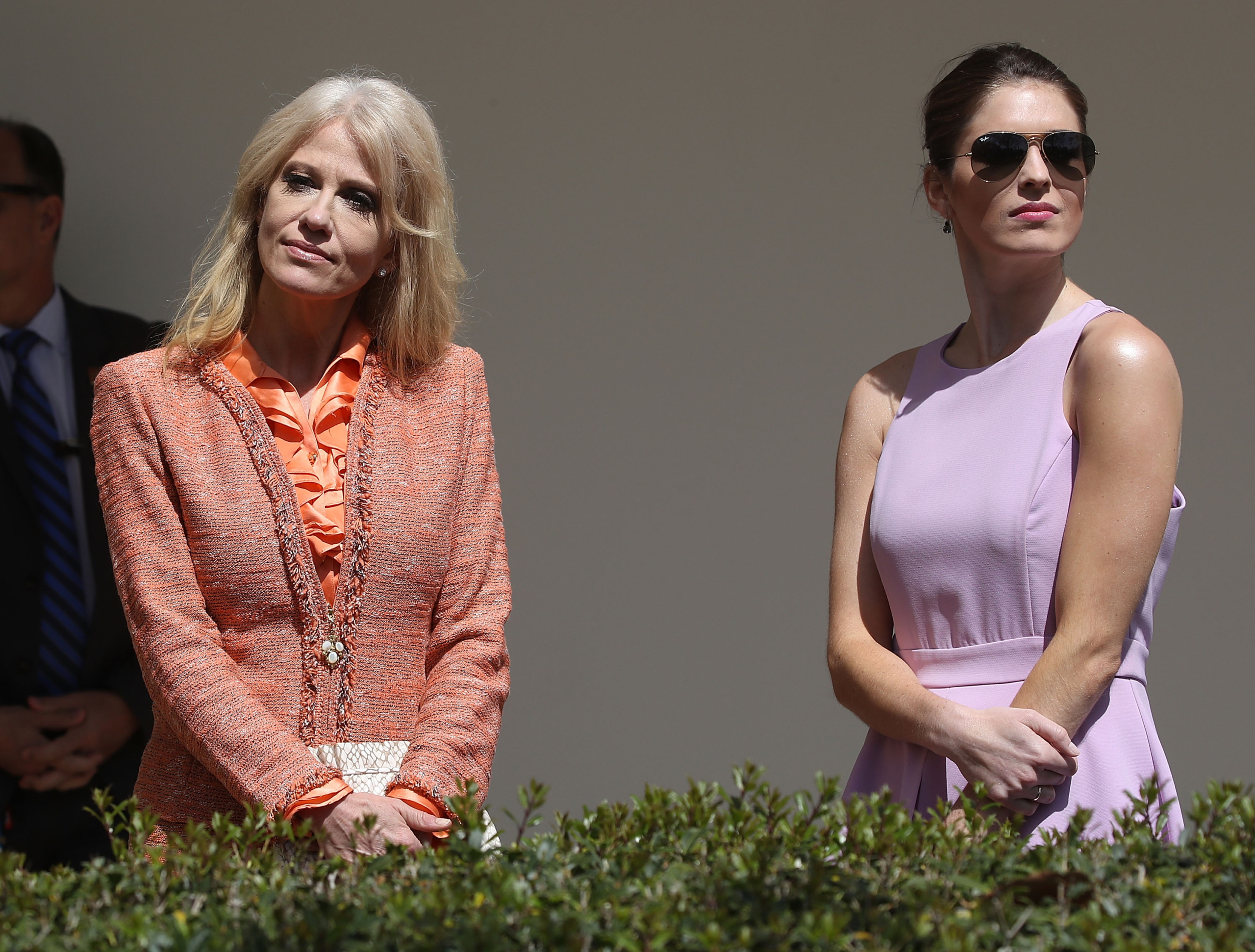Shortly before Hope Hicks resigned her position as the White House communications director, she appeared before a House Intelligence Committee. According to news reports, she was asked whether she had ever lied for Trump. Her answer, according to those reports, was that she had told “white lies” for Trump, but never lied about anything of substance related to the Russia investigation. (She refused to answer questions about her role in Trump’s administration, speaking only about the campaign and transition period.)
As often happens, that sent readers to the dictionary, where “white lies” soared to the top of lookups on the Merriam-Webster site. M-W defines “white lie” as “a lie about a small or unimportant matter that someone tells to avoid hurting another person.” That’s similar to the American Heritage definition: “An often trivial, diplomatic or well-intentioned untruth.”
TRENDING: How hacked emails and a yacht in Monaco ended my career at WSJ
The Oxford English Dictionary, which also defines a “white lie” as one meant to protect someone’s feelings, traces it to a 14th-century letter: “I do assure you he is vnsusspected of any vntruithe or oder notable cryme (excepte a white lye) wiche is taken for a Small fawte in thes partes.” M-W notes that Thomas More wrote in the 16th century that he hoped he was “not so superstitiously veracious as to reckon every white lie as black as murder.”
The naked word “lie” is much older: The OED’s first citation is around 900, and it’s been spelled “ly,” “lighe,” “lyge,” “leye,” “lee”…(Aren’t you glad we have dictionaries to tell us how to spell something?)
That it took 500 years for a color to be attached to a lie is all about morality and not at all about race. While “white” had meant “morally or spiritually pure” for centuries, the OED’s first listing of “white” to mean “free from malignity or evil intent; beneficent, innocent, harmless” is the same 14th-century citation as it gives for “white lie.”
But just how bad is a “white lie”? It depends on who is telling it, how trivial it is, what the truth is. When the Rev. Billy Graham died, shortly before Hicks’s testimony, The Globe and Mail reprinted an article on his Canadian debut in 1955. In it, the reporter said, Graham emphasized: “Sin was malice, gossip, the white lie, anger. ‘It gets into the holy eyes of God.’” In Graham’s view, a “white lie” was a sin, pure and simple.
We’ve all probably told “white lies.” (“We LOVED the vase you gave us. Sadly, it broke.”) And how many parents told a “white lie” that the goldfish/turtle/hamster that suddenly disappeared “got lonely and went home”? We tell “white lies” to protect someone from further harm. Sometimes we tell them to protect ourselves, as well.
For most people, a “white lie” avoids a harsher truth, one that would have a greater impact on someone. So just whom was Hope Hicks protecting, and from what, when she told her “white lies”?
ICYMI: Headlines editors probably wish they could take back
Merrill Perlman managed copy desks across the newsroom at the New York Times, where she worked for twenty-five years. Follow her on Twitter at @meperl.

